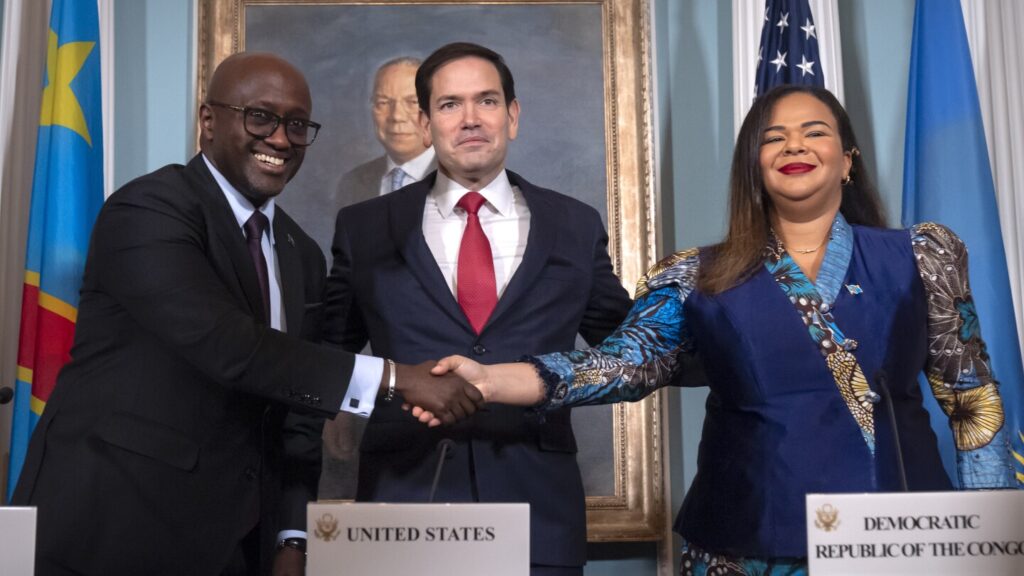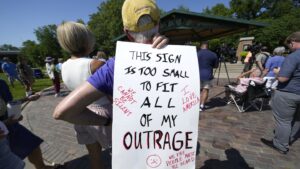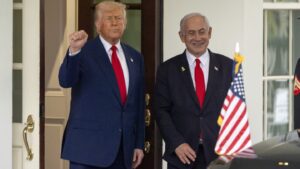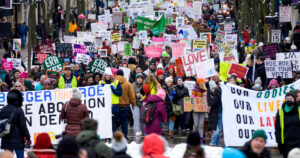
WASHINGTON — The Democratic Republic of Congo and Rwanda signed a US-facilitated peace agreement on Friday, aiming to end the decades-long conflict in eastern Congo. The deal also opens doors for US access to critical minerals in the region.
Immediate Impact
“Today, the violence and destruction comes to an end, and the entire region begins a new chapter of hope and opportunity, harmony, prosperity, and peace,” President Donald Trump declared to the foreign ministers of the two countries during a White House meeting.
The agreement was signed earlier at the State Department’s Treaty Room, under the watchful gaze of a portrait of Colin Powell, the first African American Secretary of State. Secretary of State Marco Rubio described the event as “an important moment after 30 years of war.”
Key Details Emerge
The Central African nation of Congo has been plagued by conflict involving over 100 armed groups, with the most significant backing from Rwanda. These conflicts have resulted in millions of deaths since the 1990s. While the peace deal is a significant milestone, analysts caution that it may not immediately halt the fighting, as the most prominent armed group claims it is not bound by the agreement.
More than 100 armed groups have been involved in the conflict, which has resulted in millions of deaths since the 1990s.
Industry Response
Many Congolese view the agreement as a strategic move by the US to gain access to crucial minerals essential for global technology, following Congo’s appeal to Trump for assistance against the rebels. The US is keen on accessing these minerals amidst its competition with China for influence in Africa.
Congo and Rwanda Send Top Diplomats to Sign
Congo’s Foreign Minister Therese Kayikwamba Wagner and Rwandan Foreign Minister Olivier Nduhungirehe signed the agreement, expressing optimism but acknowledging the substantial work ahead to end the hostilities.
“Some wounds will heal, but they will never fully disappear,” Wagner stated. “Those who have suffered the most are watching. They are expecting this agreement to be respected, and we cannot fail them.”
By the Numbers
With 7 million people displaced in Congo, the United Nations has labeled it “one of the most protracted, complex, serious humanitarian crises on Earth.”
What Comes Next
The peace deal includes provisions on territorial integrity, a ban on hostilities, and the disengagement, disarmament, and conditional integration of non-state armed groups. However, the Rwanda-backed M23 rebel group remains a significant challenge, having left a trail of devastation earlier this year.
Asked about potential violations of the agreement, Trump expressed confidence that breaches would not occur but warned of “very severe penalties, financial and otherwise,” if they did.
Background Context
The conflict can be traced back to the aftermath of the 1994 genocide in Rwanda, where Hutu militias killed between 500,000 and 1 million ethnic Tutsi and moderate Hutus. When Tutsi-led forces retaliated, nearly 2 million Hutus fled to Congo, fearing reprisals.
Since then, the ongoing conflict in east Congo has resulted in 6 million deaths due to attacks, famines, and unchecked disease outbreaks stemming from the fighting.
Expert Analysis
Christian Moleka, a political scientist at the Congolese think tank Dypol, described the deal as a “major turning point” but noted it fails to address war crimes and justice for victims. “This seems like a trigger-happy proposition and cannot establish lasting peace without justice and reparation,” he commented.
In Congo’s North Kivu province, heavily impacted by the conflict, some residents believe the peace deal could help resolve the violence but insist that justice must be served for enduring peace.
Regional Implications
Rwandan authorities have accused the Hutus who fled of participating in the genocide and alleged that elements of the Congolese army protected them. They argue that the militias formed by a small fraction of the Hutus pose a threat to Rwanda’s Tutsi population.
Meanwhile, the US government’s role in ending the conflict might hinge on the extent of its access to the minerals discussed in separate negotiations with the Congolese government. The US Department of Commerce estimates these mostly untapped minerals to be worth as much as $24 trillion.
As the international community watches closely, the peace accord marks a pivotal moment in the region’s history, though many challenges remain on the path to lasting peace.
Asadu reported from Dakar, Senegal. AP writers Edith M. Lederer at the United Nations, Justin Kabumba in Goma, Congo, and Ignatius Ssuuna in Kigali, Rwanda, contributed to this report.





